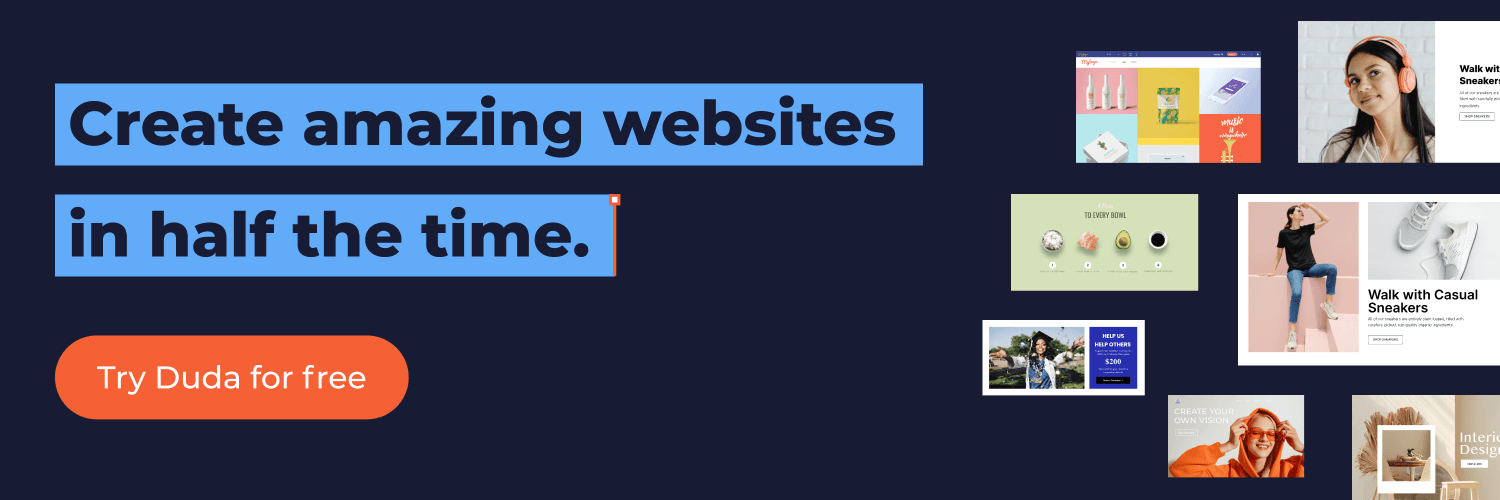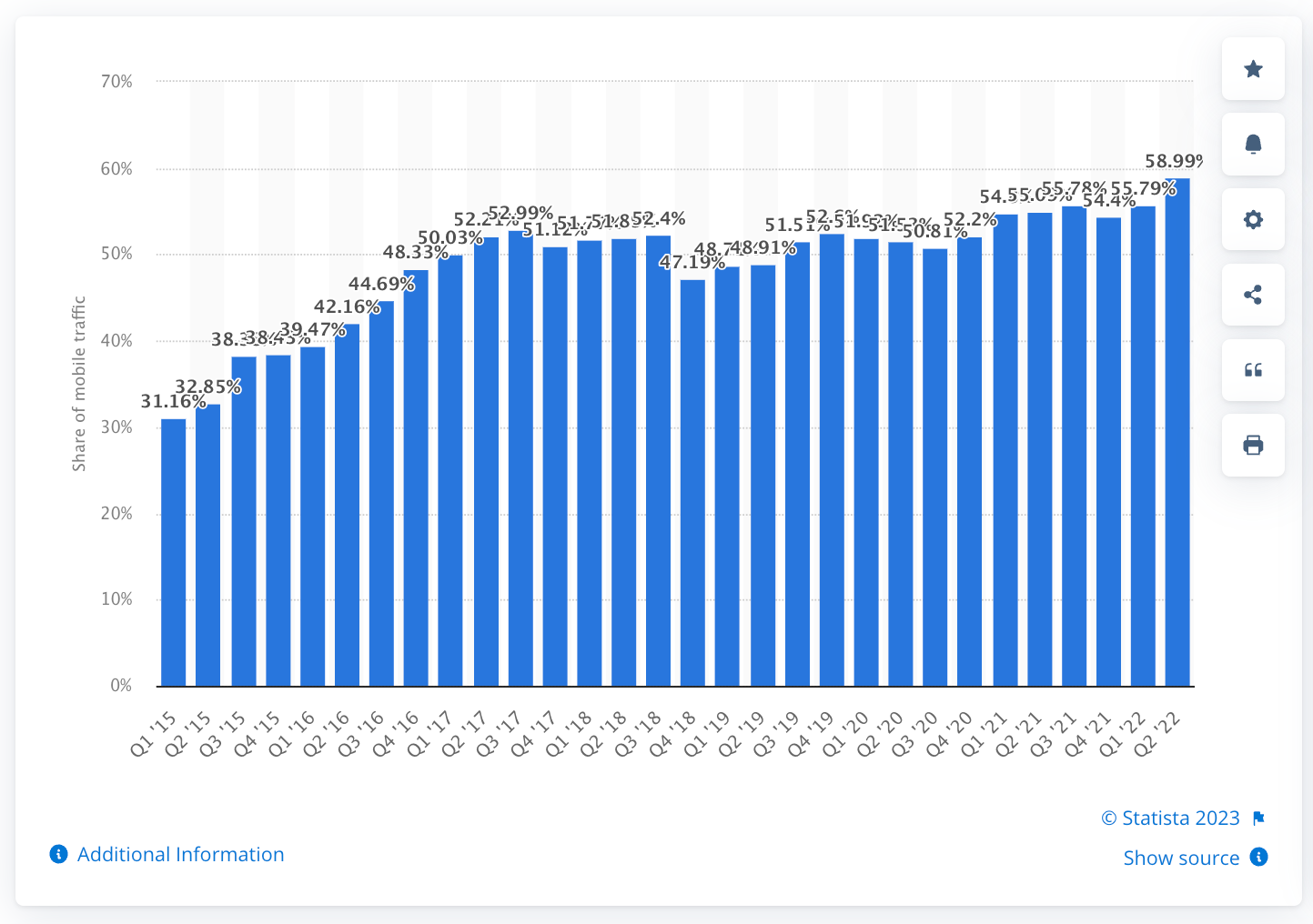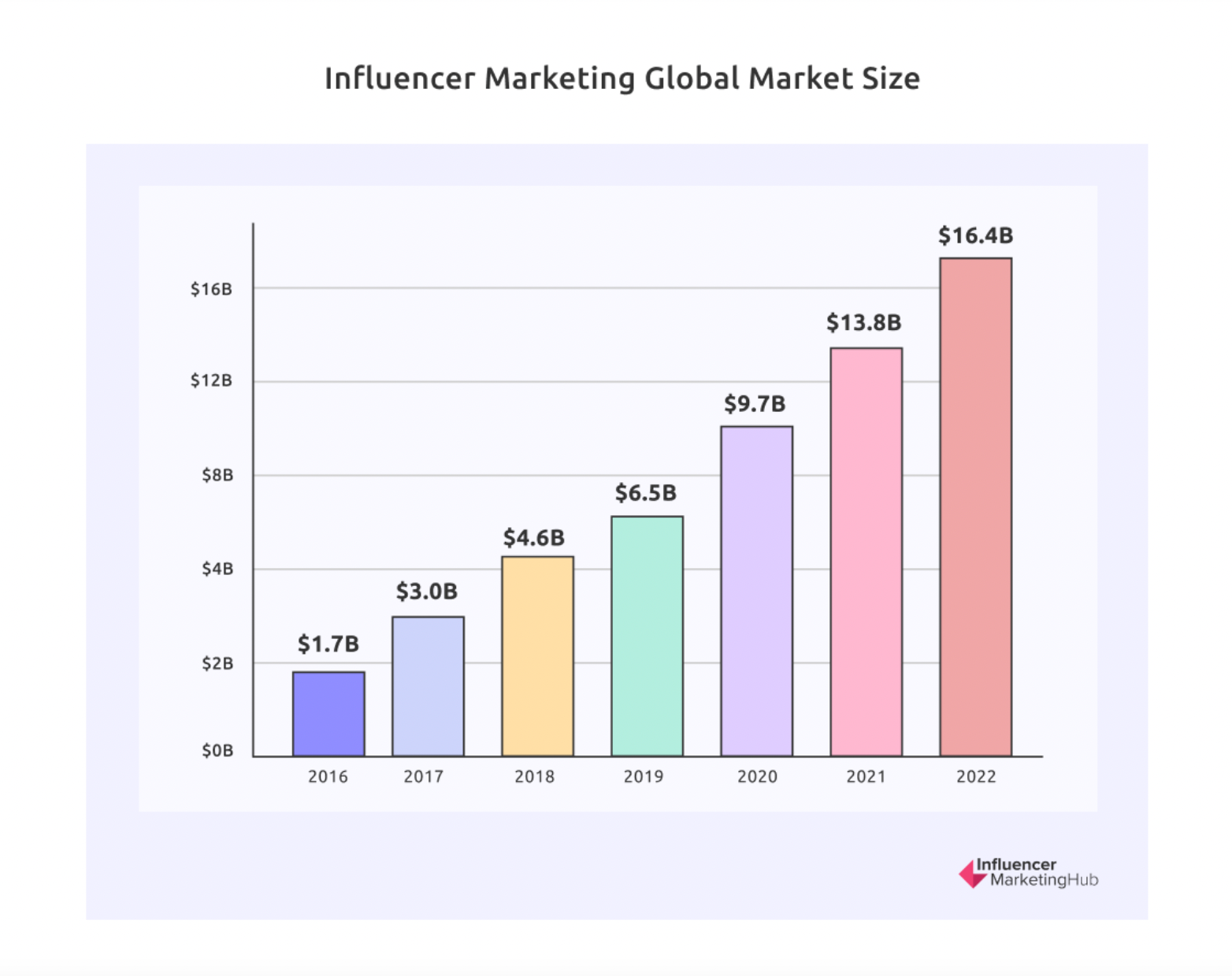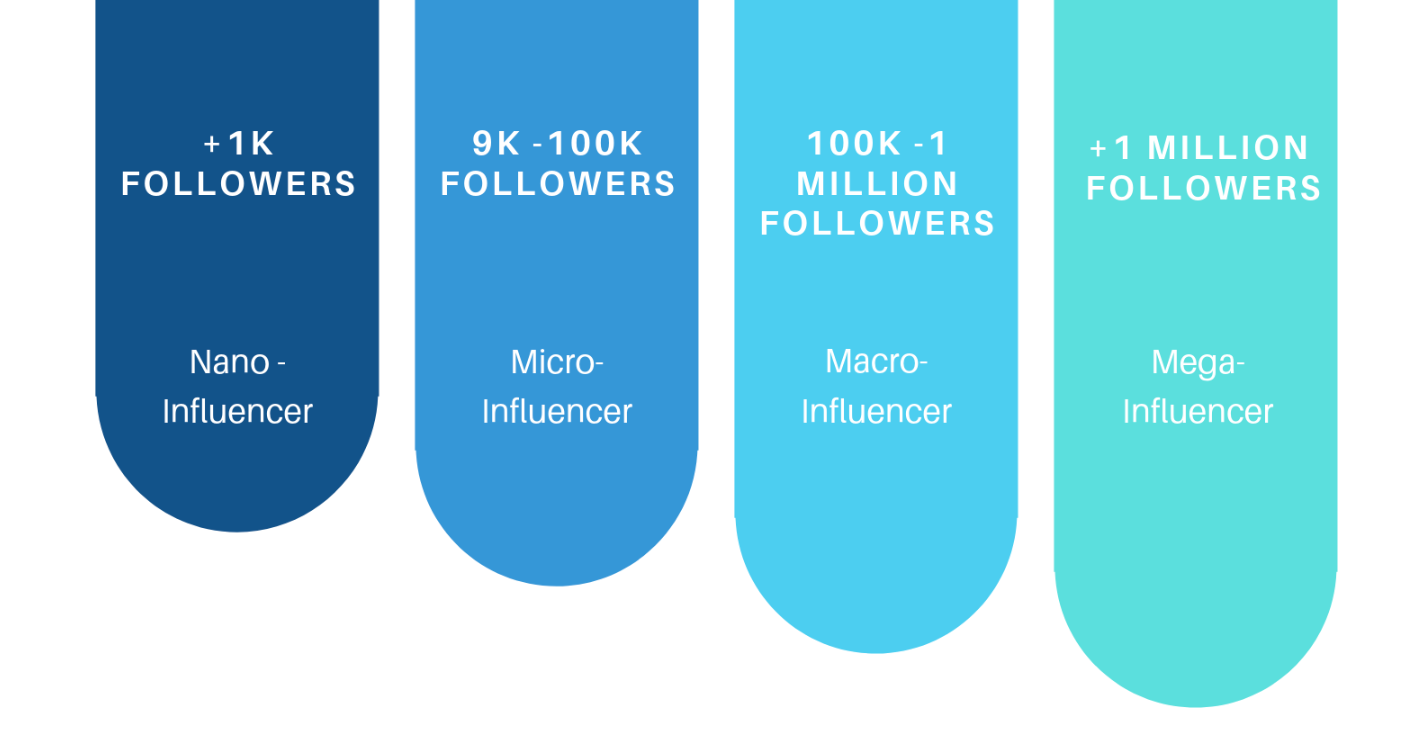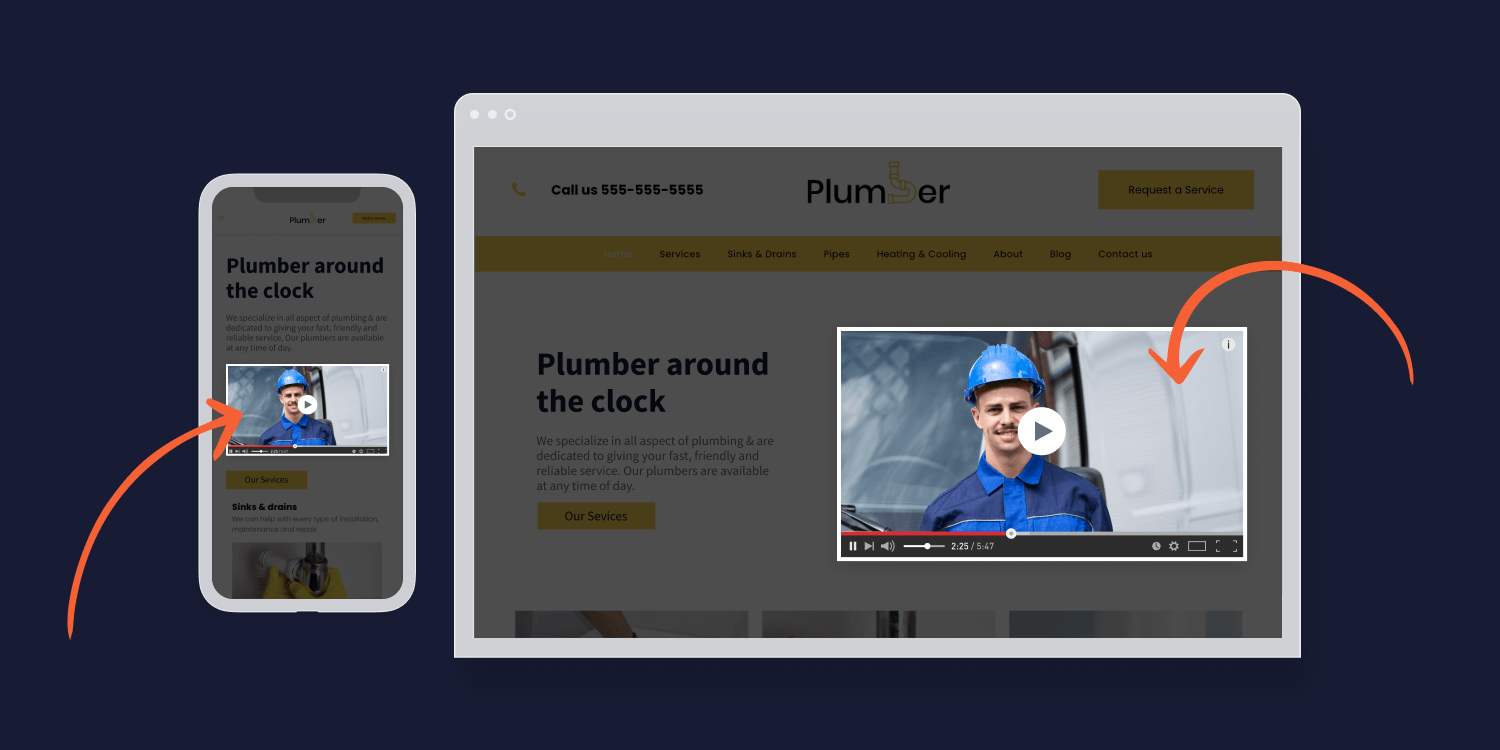It's safe to say the past few years have been crazy for all of us, digital marketing agencies included.
Your agency survived the sudden onset of the COVID-19 pandemic, geopolitical issues (i.e., China versus Taiwan, Russia versus Ukraine), pandemic recovery, and what's not.
But as we move into 2023, the top concern for most businesses, according to the
US Chamber of Commerce, is inflation. Dramatically increasing input costs have put massive pressure on businesses not just to perform, but to survive.
For digital marketing agencies, there is a need to focus on the most lucrative and efficient aspects of the trade in order to stay afloat and succeed. That’s why it's important to stay on top of the latest trends in the industry.
Based on our extensive industry knowledge and research, we've compiled the most important digital marketing trends for 2023 into this article.
10 Essential marketing Trends for AGENCIES and their SMB Clients for 2023
From Google updates to Gen Z influencers, here are the trends digital marketing agencies and their SMB clients need to know for their businesses to thrive this coming year.
1. Google Updates and Privacy Regulations
Google Analytics 4 is the tip of the iceberg when it comes to Google's plans for the future. With an increased focus on privacy and data collection, digital marketing agencies will need to keep a close eye on Google’s ongoing updates so that any changes in the future don't blindside their SMB clients.
Google is constantly rolling out new updates to its algorithm, and if your client's website isn’t optimized accordingly, you could be in trouble. Keep up with Google's
Search Essentials (formerly Webmaster Guidelines) in order to make sure your clients' websites remain compliant.
Privacy regulations like GDPR and CCPA are also becoming increasingly important for businesses looking to protect consumer data. Make sure your clients are aware of their obligations and have the necessary measures in place to stay compliant.
Google's Cookieless Future
Google's latest initiative, the "Privacy Sandbox," aims to phase out third-party cookies and pave the way for a cookieless future. This will allow consumers more control over their data and make it harder for advertisers to track user behavior.
As such, digital marketing agencies should start making plans now to pivot away from cookie-based tracking and customer data platforms and towards more targeted, user-centric strategies like contextual targeting.
For small and medium-sized businesses, this means they’ll need to adjust their targeting strategies, start collecting more first-party data and zero-party data, focusing on relevance over frequency.
Zero-party data is information that users voluntarily provide about themselves, such as preferences, demographics, and purchase intent. It can be collected via first-party interactions (e.g., in-store checkouts or surveys) or third-party sources (e.g., social media).
The goal of zero party data is to create more targeted ads based on customers' explicit needs and interests, without relying solely on cookies for tracking. This allows companies to capture the full picture of a customer’s online profile—rather than fragmented bits of digital behavior gathered from multiple sources—and engage with them more meaningfully and personally.
When running new campaigns and developing new initiatives for clients, agencies will need to find clever ways to capture zero-party data.
A few common strategies for gathering zero-party data include:
- Surveys
- In-app user feedback
- Online polls and quizzes
- Social media contests and giveaways
Many organizations also offer rewards and incentives for users who opt-in to share their data, so this is something agencies should consider when creating campaigns for clients.
2. Continued Changes to the SEO Landscape
As Google dominates the world of organic search, its changes (such as the aforementioned Google Analytics 4 and cookie-less future) are having a huge impact on the way digital marketing agencies approach SEO.
With over 200 ranking signals, SEO is a complex and ever-changing landscape that requires constant attention. Agencies need to stay on top of new trends and algorithm updates to ensure their clients’ sites remain at the top of Google search results pages.
Google's Helpful Content Update
When Google first released its Helpful Content Update in August 2022, SEOs, content marketers, and digital marketers quickly took to Linkedin, Twitter, and other social media sites to share their concerns, opinions, and predictions.
Google's update encourages content creators to focus on providing users with “helpful” content that meets their informational needs, rather than relying solely on keyword optimization techniques.
On the surface, this means a few things:
- SEOs and marketers who have focused their efforts primarily on gaming the system with keyword stuffing, link farms, and other shady tactics are at risk, and so are their clients.
- Keywords should no longer be the basis of a content marketing strategy.
- Content creators should focus on providing users with helpful, informative content that meets their needs, rather than simply trying to rank for certain keywords.
- Agencies must help clients understand the importance of creating useful content for SEO purposes.
It also means that agencies will have to invest in copywriting talent that can meet the challenges of the Helpful Content Update. Instead of writing content with AI tools just to hit keyword targets, agencies need copywriters and subject matter experts (SMEs) who can help clients create content that is informative and useful.
Zero-Volume Keywords
When you Google something to find information, what do you search for? Do you look up a one or two-word keyword, or do you type a question into the search query?
The answer is likely the latter.
This is why agencies need to pay attention to zero-volume keywords, which are composed of long-tail phrases and questions users are searching for.
Zero-volume keywords help optimize content by targeting specific queries that have yet to be targeted by competitors. They also offer insight into what consumers want and need, allowing agencies to create content that caters directly to their clients' audiences.
Agencies should use zero-volume keywords to guide their SEO and content strategies. When they look into their target customers and find the topics they're looking for, they can create content that not only satisfies those needs, but also ranks for competitive keywords in the long run.
The result is less traffic, but better targeting and higher conversions.
To monitor these marketing efforts, agencies will need to have a robust suite of SEO reporting tools that are built to analyze these metrics.
Note:
"Zero-volume" does not actually mean that they have no volume. Keyword research tools are based on data they scrape from search engine databases. So, when a keyword research tool says something has zero volume or low search volume, it really means that the keyword isn't popular enough to appear in their database.
Voice Search
We don't just type queries into Google anymore. We also ask Alexa and Siri for help, or use voice search on our smartphones to find information quickly and easily.
The rise of smart home devices means that more people are using their voices to search for answers, meaning digital marketing agencies need to pay attention to this trend if they want their clients' content to be found.
For instance, agencies should help their clients optimize for long-tail keywords and natural language queries to target voice search users accurately. Additionally, they need to ensure that the content on their websites is easy to understand by both people and machines.
That said, there isn't much data available on voice search yet—Google's John Mueller suggests that site owners use voice search themselves and "think about how you'd position your content there in a useful way."
From e-commerce product pages to long-form blog posts, this means having products and information that are already designed with conversion in mind.
Visual Search
Visual search is a type of technology that uses images or videos as the basis for a search query. It involves using computer vision and image recognition algorithms to extract information from an image or video, allowing users to quickly find what they're looking for without having to manually type in keywords.
The technology works by analyzing an image or video and recognizing patterns, shapes, and colors in order to find matches. It's already being used by companies like Amazon, which has launched its own visual search tool.
For digital marketing agencies, this means understanding the importance of visuals and how they can help their clients rank better in search results. Agencies should also pay attention to image SEO when optimizing their clients' websites, and use visuals to draw attention to key messages and highlight important information.
In terms of how to optimize clients' websites for visual search, much of the same principles apply as with voice search. Agencies should pay attention to the quality of visuals on their clients' websites, and make sure that they are properly tagged and labeled for image recognition technology to identify them accurately.
And more importantly, they should focus on how (and why) someone would find an image for a search query, click on it, and ultimately convert.
3. Mobile-Friendly Websites
Google's mobile-first indexing has always been a priority for marketing teams, but as more people use their phones to search and browse the web, mobile-friendly sites are becoming increasingly important.
Now, mobile website traffic takes up
nearly 60% of the market share, meaning agencies need to be sure that their clients' websites are optimized for a mobile user experience.
When creating or updating a website, agencies should look into using responsive design techniques, which allow the content to automatically adjust and fit any device's screen size and orientation.
For SMBs to remain competitive, agencies must also optimize the website's load time.
Web performance strongly
impacts
conversion rates, and all your marketing campaigns will be for nothing if your client's site doesn’t perform the way it should. This means compressing images, minifying HTML and CSS files and more.
Duda’s
website
builder has mobile optimization/responsiveness built in. In addition, Duda
is the top in Core Web Vital scores. All Duda websites are hosted on Amazon Web Services (AWS), which provides great availability, speed, and security.
4. Influencer Marketing
The vast majority of consumers don't trust ads, and they haven't for years. That isn't to say that traditional advertising doesn't work—it still can and does—but it's important that digital marketing agencies understand this shift in consumer behavior.
Influencers have the ability to connect with their audience the same way peers and friends connect with each other. And since people tend to make purchase decisions based on personal recommendations, the meteoric rise of the influencer marketing industry should come as no surprise.
There are four types of influencers:
- Nano-influencers:
These are usually everyday users with a relatively small following, but they still have the power to drive engagement and conversions.
- Micro-influencers:
A bit more established than nano-influencers, they typically have between 10k and 100K followers across their social media channels.
- Macro-Influencers: These are the biggest names in their respective fields and often have millions of followers.
- Mega-Influencers and Celebrities:
These are celebrities with a huge following, who typically command higher fees for their endorsements.
To fully understand the influencer marketing landscape, companies must first clearly understand the trends within the space.
Micro-Influencer Dominance
It isn't just ads that people no longer trust—consumers know that many celebrities simply promote products because someone is cutting them a check.
From shamelessly promoting crypto pump-and-dump schemes to deliberately promoting unhealthy fad diets, people are fed up with the deceptive practices of major influencers.
This is why micro-influencers perform at least 90% of successful influencer marketing—they’re more relatable and authentic, making their recommendations seem much more genuine.
This is a massive opportunity for SMBs. Using the right influencer partnerships, emerging B2B and B2C brands can develop highly competitive marketing campaigns with targeted messaging at a fraction of the cost.
User-Generated Content
User-generated content (UGC) is a form of organic content marketing, where customers create content about a brand or product that’s shared across social media.
UGC can be anything from blog posts to reviews and even pictures of customers using the product itself—all of which can contribute significantly to an increase in organic traffic and conversions.
Thanks to the growth of TikTok, Reels, and YouTube Shorts, UGC is all over the place. From makeup tutorial challenges to unique product hacks, there’s no shortage of content that people are creating and sharing.
This type of content gives viewers a much more intimate look at what the product or service is like, which can be extremely beneficial for SMBs.
A few ways agencies can help their SMB clients encourage UGC include:
- Creating contests and giveaways
- Offering discounts or freebies in return for UGC
- Making it easier to share content (for example, adding social media sharing buttons)
- Partnering with industry micro-influencers who can help promote the brand
As a part of their marketing efforts, businesses should also develop their own content in UGC format (i.e., filmed on a smartphone from a first-person perspective). Then, they can distribute it across social platforms that are suited to the type of content they produce.
5. Artificial Intelligence
The ways AI is changing life as we know it are seemingly endless, and
the same goes for digital agencies.
That said, there are plenty of myths and preconceived notions about AI that need to be debunked. Let's take a closer look at how AI will impact the SMB landscape and the greater digital marketing industry.
Generative AI
Any discussion about AI should begin with the recent revolution brought by ChatGPT generative AI solution.
Although ChatGPT is not the only solution available, the attention it is receiving is undeniable.
Everywhere you look, people are talking about ChatGPT and utilizing it in various ways.
As the trend continues to grow, it is clear that generative AI is already changing the way marketing agencies create content for clients. In terms of SEO,
Bing is already planning to implement it and
Google is exploring the possibility, so be on the lookout for more advancements to come.
Conversational Marketing
Remember what we mentioned earlier about personalized experiences?
AI is the perfect tool for that.
91% of shoppers want real-time assistance with their purchases, and chatbots powered by AI can respond to customers instantaneously with natural language processing. They can even understand and interpret customer behavior.
There are a few types of conversational marketing:
- AI Chatbots:
These chatbots use natural language processing and machine learning to provide answers to customer queries.
- SMS and Instant Messaging Platforms:
Messaging apps like Whatsapp and Facebook Messenger are used to provide omnichannel support and assistance.
- Live Chat Software:
Live chat software powered by real people is the logical next step, with AI-enhanced features like auto-responder messages, which can help free up customer service reps.
- Voice Assistants:
Smart speakers, such as Amazon Echo and Google Home, enable customers to request product information and place orders via voice commands.
- Augmented Reality (AR):
AR can be used to create interactive scenarios that allow customers to experience a product before they buy it.
For SMBs, conversational marketing is a game-changing opportunity to increase conversions, improve the customer experience, and reduce customer service costs.
eCommerce sites can use this kind of technology to provide personalized shopping experiences, while brick-and-mortar stores can use it to measure customer feedback and analyze customer data in real-time.
Software-as-a-Service (SaaS) and B2B businesses can use it to qualify leads, answer customer inquiries, and segment customers into different tiers before a sales rep even talks to them.
AI platforms like Google and IBM Watson can help businesses make sense of the huge amounts of data they have at their disposal.
Business intelligence tools powered by AI can be used to gain insight into customer behavior, predict future trends, and analyze customer feedback. This is invaluable for small business owners who are looking to maximize their marketing budget and get a competitive edge in the market.
Google Analytics 4's powerful AI engine will be especially useful for agencies who want to build comprehensive client reports. It can help them detect anomalies in data and give them a better understanding of how their clients are performing.
In addition, with its predictive insights features, agencies can see what's coming up in the near future so they can make adjustments to campaigns accordingly.
Process Automation
SMBs and marketing agencies equally reap the benefits of automation in their own regards.
In terms of how it improves client-agency relationships, marketing automation platforms like HubSpot and Autopilot can be used to streamline customer segmentation, email campaigns, and customer service efforts.
These technologies will enable agencies to save time and energy on mundane tasks so they can focus on more pressing matters.
On a broader scale, AI also improves
client relationships in the following areas:
- Streamlined Communication:
Slack, Zoom, and other app-based platforms make it easier for agencies to communicate with their clients. And they have AI automations that enable smoother communication.
- Increased Security:
AI is being used to enhance security measures in terms of data privacy and fraud prevention.
- Data Analysis: AI helps agencies analyze customer data in real time, which can help them make better decisions when it comes to their clients' marketing strategies.
- Project Management: AI-based project management tools like Asana and Trello can be used to streamline client projects, allowing for greater visibility and accuracy.
- Social Media Automation: AI-powered social media automation platforms such as Hootsuite and Sprout Social enable agencies to optimize content distribution, measure performance, and provide personalized customer experiences.
The best thing about most of these tools is that they are not only budget-friendly, but time and money-saving to implement. Agencies using AI-powered tools can communicate with their clients more easily, driving ROI for both parties. And SMBs using artificial intelligence applications can access valuable insights they need to remain competitive against bigger businesses.
6. Metaverse Marketing
The metaverse is a term used to describe 3D virtual worlds where people can interact with each other and create content. It is a digital universe that combines the physical and digital realms.
Depending on the industry, the metaverse could mean a variety of things. It could be a platform for education, entertainment, or even social interaction.
Three ways SMBs can use the metaverse include:
- Marketing and Promotions:
Companies can create immersive experiences such as product demonstrations and virtual tours that help promote their products.
- Training and Education:
SMBs can use the metaverse to provide training and education to their customers or employees, allowing them to gain valuable skills without needing to leave their homes.
- Collaborations: SMBs can collaborate with other businesses on joint projects and events in the metaverse, helping to expand their market reach.
Hyundai's Mobility Adventure campaign is a perfect example of metaverse promotions in action. The only thing that marketers should be considerate of is the fact that many people still don’t understand the metaverse, so they should make sure to clearly explain what their campaign entails.
It is also worth noting that not every company's target audience is situated in the metaverse at a large enough scale for it to be economically justifiable. If a business is looking to target a niche like gamers, then it would make more sense to pursue metaverse marketing. But for SMBs targeting a more mainstream audience, it may not be worth the effort at the moment.
7. Programmatic Advertising
Programmatic advertising is a form of automated digital marketing that involves using software to purchase online ad space, targeting specific audiences and optimizing campaigns in real time.
Think of it like an auction, where you bid for ad space and the highest bidder wins. Except that instead of bidding manually, an algorithm does it for you instantaneously.
Programmatic advertising has several benefits for SMBs, including:
- Cost-Effectiveness: Programmatic ad campaigns are very cost-effective as they don’t require manual labor or a large budget to get started.
- Real-Time Optimization: Programmatic ads can be optimized in real time, allowing them to be adjusted based on performance.
- Better Targeting:
Programmatic ads can be used to target specific audiences, making them more effective than traditional online ad campaigns.
Programmatic advertising is an excellent way for SMBs to reach their target audience and generate leads. However, marketers should keep in mind that it requires some technical know-how to set up and manage campaigns.
A good agency should be able to handle the entire process for their SMB clients, from setting up the campaign to optimizing it for maximum results.
8. Corporate Social Responsibility (CSR)
A few trends have been growing in popularity over the last few years, but none more so than corporate social responsibility (CSR).
As the world becomes increasingly aware of environmental and social issues, people are expecting businesses to take a stand. As such, many SMBs have started incorporating CSR into their brand strategy as a way to stand out from the competition and attract more customers.
CSR initiatives can range from donating money to charities, to creating products and services that are eco-friendly, to creating sustainable business practices.
Let's take a look at some of the overarching trends within CSR.
Sustainability is at the forefront of consumers' minds.
As reported in 2019 by the Harvard Business Review, sustainable products have experienced five times more success than other brands when it comes to sales growth. This trend has only continued to gain momentum five years later.
A 2021 Global Sustainability Study report uncovered a remarkable statistic: 33% of consumers are willing to pay extra for sustainable products. This is especially true among Gen Z—61%, in fact—who prioritize eco-friendly options even if they cost more, says the report.
When shopping online, customers seem particularly eager to find green alternatives that match their values and lifestyle, including:
- Products that use natural and organic materials
- Recycled, upcycled, or reused products
- Brands donating to eco-friendly and social causes
- Chemical and addtive-free items
- Long-lasting and durable items, as opposed to single-use products
Diversity, equity, and inclusion (DEI) are new priorities for consumers.
Another important trend is DEI, or diversity, equity, and inclusion. According to a 2022 CEO survey by Fortune and Deloitte, it's a strategic priority for 94% of CEOs.
As a whole, society has become more aware of the need for greater inclusion and representation in all aspects of life—including businesses. Potential customers now expect companies to show their commitment to fostering an inclusive environment through anti-discrimination policies, job opportunities for minority groups, and other DEI initiatives.
Businesses should not only be aware of the need for greater diversity but also take action to make it a reality. SMBs can start by forming a clear policy on discrimination, making sure all employees are informed of its implications.
They can also spread awareness and create programs to support diverse groups in their communities, such as minorities and people with disabilities.
New talent cares about social initiatives just as much as customers do.
From a talent sourcing perspective, SMBs should consider how their DEI and sustainability initiatives factor into hiring decisions. 83% of Gen Z candidates say they look at a company's commitment to diversity when evaluating job opportunities and Millennials feel the same way, according to the latest data from Monster.
Since a major component of product development, revenue growth, and customer loyalty is based on talent acquisition, companies must prioritize DEI initiatives to attract the best candidates and retain top employees.
Marketing strategies must evolve to reflect the new reality.
Plenty of brands offer one or all of these things but do a poor job at communicating that through their marketing campaigns.
In 2023, building brand awareness means much more than just promoting products and services. It means showing customers what CSR initiatives your business stands for and how it impacts the community, environment, and society as a whole.
Here are a few ideas:
- Creating video content that highlights the company’s DEI and sustainability efforts
- Organizing events to promote eco-friendly initiatives or support local causes
- Developing campaigns that highlight minority stories and experiences
- Offering discounts for customers who buy eco-friendly products or donate to green causes
To build trust, companies should also focus on how their products benefit consumers in pursuit of these principles in their own lives.
Video killed the radio star, and it definitely made a huge difference in the digital marketing industry.
Today,
video content is one of the most important aspects of any successful digital campaign.
LinkedIn found that video content was 1,200% more successful than other types of content in terms of social shares and engagement.
There are a few reasons for this:
- Video content allows for creative storytelling, a crucial aspect of brand building
- It’s easier to consume and share than other types of content
- The diversity of video content types (livestreams, webinars, explainer videos, tutorials, etc) allows businesses to address different topics and reach a variety of audiences
For SMBs looking to leverage video content in the next year, there are several key factors to look at.
Vertical Video
People gravitate towards organic content shared by real people. And since most people use smartphones throughout their daily lives, vertical video has become a logical choice for marketers who want to appeal to mobile users.
As of this year,
more than 60% of digital video was viewed on a mobile device, meaning that businesses need to create content specifically optimized for the vertical format.
TikTok campaigns are the perfect way to do this. Fenty is a perfect example of how creating engaging vertical content can drive revenue and build a strong brand presence. By creating culturally relevant content on a consistent basis, Fenty provides value and promotes its brand directly to its target audience. And since it’s natural-looking, it converts additional customers.
This is an area where SMBs can learn from the big guys—maintaining an active social presence has never been easier, and social media marketing activites can be leveraged with minimal financial resources.
Live streaming offers a great way for brands to connect with their audiences in real time. Live streaming audiences are more engaged because they can interact with the content, ask questions, and even influence how the story unfolds.
Live video also offers an inexpensive way to reach large audiences, as it doesn’t require any special equipment other than a smartphone and a few editing tools.
Digital agencies can work with their SMB clients to form partnerships with digital streamers on Twitch, host live stream events that showcase the brand’s products and services, or even create tutorials that showcase their technical expertise.
Especially for businesses with unique or complex products, these types of activities can help SMBs build up their following while also demonstrating how they differentiate themselves from competitors.
Short-Form Video Content
The days of long-form content are not exactly over, but shorter videos are the safest bet for agencies that want to maximize the reach of their content.
Audiences today want to watch interesting videos in a matter of seconds, which is why shorter videos are so effective—they can be quickly consumed and shared across social platforms.
Short-form video content should focus on making an impact while also being entertaining and informative.
A few examples include:
- Behind-the-scenes videos from the business
- Interviews with experts in the industry
- A short demonstration of a product/service
- Memes and GIFs
- Micro-influencer collaborations
- Feature-to-benefit videos
The possibilities are endless. Digital agencies can help SMBs create a strategic plan of action and advise them on how to leverage the right types of content that will appeal to their target audience.
One of the best PR moves, podcasts are the perfect strategy for connecting with customers and building relationships. Podcasts offer a much more personal way to connect with your audience, as it allows you to let them get to know the people behind the brand.
Plus, they are incredibly powerful when used in combination with other forms of content—think creating snippets from the podcast episode and repurposing them into shorter videos to share on social media.
Digital agencies can advise SMBs in terms of how to spot a great podcast topic, how to create compelling content that resonates with their audience, and how to promote the podcast for maximum reach.
User-Generated Content (UGC)
We mentioned UGC before, but it's worth a reminder.
If you want your customers to do the marketing for you, user-generated content is the way to go. UGC offers an effective way for businesses to make their customers part of their story, which helps create an authentic connection with their target audience.
It’s also a great way to build trust and credibility—when someone sees content created by one of their peers about a particular product or service, they can see the benefits and real-life use cases right in front of them.
GoPro is the perfect example of a company that’s built an entire brand around UGC (and they've been doing it for years).
The company encourages its customers to create content with their products, and then share it on social media platforms. Then, they feature the best content on their site, giving them more exposure.
Related:
The Power Of Adding Videos To Your Clients’ Sites
Every year, some marketers argue that email is dead, and last year was no different.
But looking forward, email marketing remains one of the most effective ways to reach customers. It’s also an easy way to keep in touch with customers and build relationships with them over time.
A few of the basic trends in email marketing include:
- Segmentation: Divide your customers into groups that share common characteristics
- Automation: Automate certain emails to make sure they reach the right customer at the right time
- Personalization: Create personalized emails that speak directly to each customer
- Interactive Content:
Add interactive elements, such as polls and surveys, to engage customers in a more meaningful way
Beyond this, digital agencies will have to get creative to run successful email marketing campaigns.
Here are a few areas for agencies to consider for their content creation efforts:
- Instantly Usable Content:
Content that a customer or email subscriber can use right away. For example, a healthy snack or food company might email its customers a weekly healthy recipe.
- Exclusive Offers:
Offering exclusive deals to customers via email is a great way to get them to purchase right away.
- E-Newsletters: A helpful way to keep customers informed of new products and services, special offers, and any other news they should know.
- Interactive Content:
Content that can be interacted with, such as polls, surveys, and games.
The possibilities are endless when it comes to email marketing, but a well-informed strategy will depend on the SMB’s goals and target audience. Digital agencies should work with their clients to understand what will be most effective for them, and then create an email marketing plan that resonates with the customers.
Final Thoughts
As we move into 2023, digital marketing agencies and SMBs have a lot to look forward to while working together.
There are plenty of trends to consider, from interactive content and UGC to podcasts and even email marketing.
Although there's economic uncertainty, by capitalizing on these trends, your chances for survival and success are higher.
One thing for sure, it's going to be interesting!






